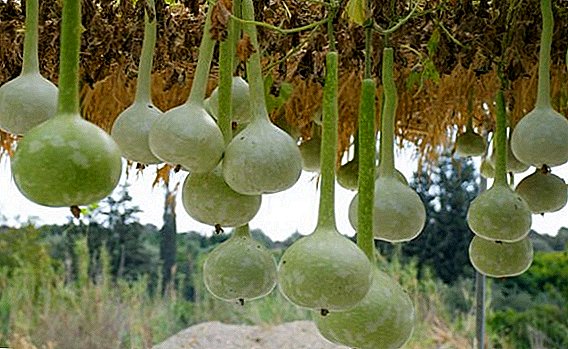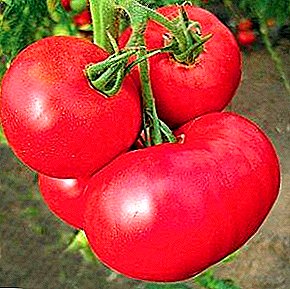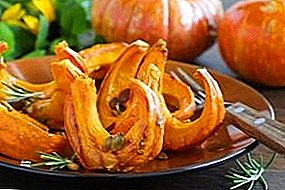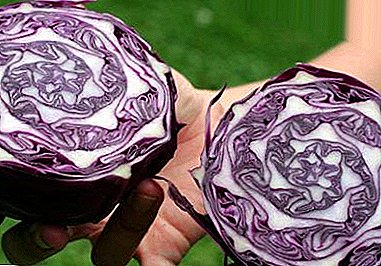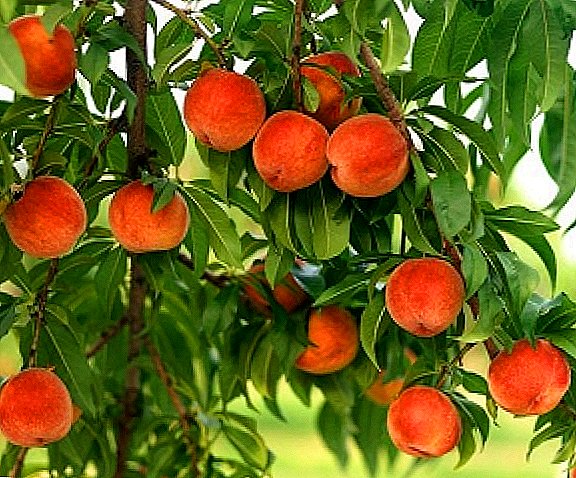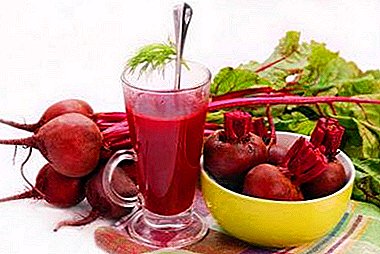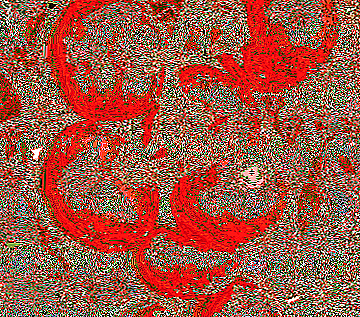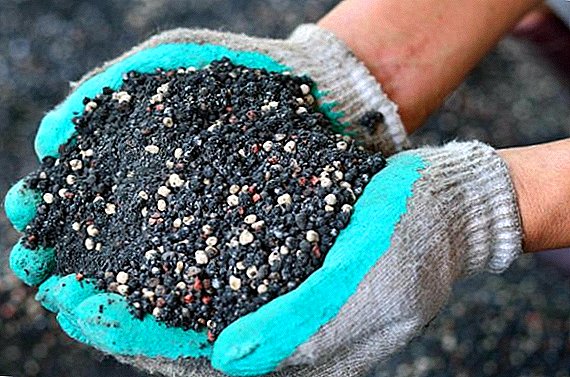 When growing any crops and fruit trees, fertilizing is indispensable. The abundance of crops depends on a number of factors, but the nutritional value of the soil is far from the last place. One of the most popular and effective fertilizers is nitroammofoska - a highly effective complex fertilizer containing at once three useful components: nitrogen, phosphorus and potassium. Most often, the tool is applied as a pre-sowing or basic fertilizer for all types of soil and for a wide variety of crops. Perhaps the most effective option for chernozem and gray earth soils is to apply the composition to the soil during irrigation, although the large variety of nitroammofoski types produced today makes it possible to choose fertilizer individually, taking into account the characteristics of specific types of soil and the needs of crops grown on them.
When growing any crops and fruit trees, fertilizing is indispensable. The abundance of crops depends on a number of factors, but the nutritional value of the soil is far from the last place. One of the most popular and effective fertilizers is nitroammofoska - a highly effective complex fertilizer containing at once three useful components: nitrogen, phosphorus and potassium. Most often, the tool is applied as a pre-sowing or basic fertilizer for all types of soil and for a wide variety of crops. Perhaps the most effective option for chernozem and gray earth soils is to apply the composition to the soil during irrigation, although the large variety of nitroammofoski types produced today makes it possible to choose fertilizer individually, taking into account the characteristics of specific types of soil and the needs of crops grown on them.
However, speaking of nitroammofosk, first of all, you need to familiarize yourself with its characteristics, because without knowledge of its features and norms of use, the use of the tool can easily harm your plants.
Nitroammofosk: description and composition of fertilizer
The content in the nitroammofosk (NH4H2PO4 + NH4NO3 + KCL) of the three main components (nitrogen, phosphorus and potassium), which are necessary for a plant for normal growth and development at different stages of life, makes the tool the most popular at present. Basically, the drug is used in liquid form as a foliar feed for garden and garden crops.
Did you know? In addition to nitroammofoski, in the modern market you can find a very similar means of nitroammophos, although if you carefully read this fertilizer and study its instructions for use, it becomes clear that these are different drugs. In the latter case, the composition of the fertilizer does not contain potassium, and the ratio of nitrogen and phosphorus is different for different grades (for example, for A - this is 23% each, and in grades B - 16% nitrogen and 24% phosphorus).
 In nitroammoposka, potassium and nitrogen are presented in the form of easily soluble compounds, and phosphorus (partially) in the form of dicalcium phosphate, which, although not soluble in water, remains completely accessible to plants, and partly in the form of water-soluble ammonium phosphate and mono-calcium phosphate. Due to the possibility of changing the technological scheme of the process, the amount of citrate-soluble and water-soluble phosphorus can vary. For example, there is no water-soluble phosphorus in the carbonate nitroammophosca at all, which is why this type of fertilizer can be used as the main one only on acidic soils.
In nitroammoposka, potassium and nitrogen are presented in the form of easily soluble compounds, and phosphorus (partially) in the form of dicalcium phosphate, which, although not soluble in water, remains completely accessible to plants, and partly in the form of water-soluble ammonium phosphate and mono-calcium phosphate. Due to the possibility of changing the technological scheme of the process, the amount of citrate-soluble and water-soluble phosphorus can vary. For example, there is no water-soluble phosphorus in the carbonate nitroammophosca at all, which is why this type of fertilizer can be used as the main one only on acidic soils.Important! The main element of the nitroammofosca Ca (H2PO4) 2, which is released in its composition, is highly soluble in nitric acid, which allows phosphorus to be quickly released from the inert species and take a form more convenient for plant nutrition (this is the main factor explaining the rate of fertilizer action) .Before you understand how to apply fertilizer nitroammofosku, it will be useful to get acquainted with its physical characteristics. First of all, it should be noted that this is a relatively harmless composition, characterized by a complete absence of explosion hazard and toxicity, although at the same time it belongs to difficultly combustible and flammable substances (the airgel ignition temperature is + 490 ... +520 ° C). At a temperature of +900 ° C, nitroammophoska does not react to burning in the furnace.
 In addition, the air suspension does not explode and does not ignite when it enters the heated coil (up to +1000 ° C). Nitroammofoska is a weak oxidizing agent, which at the same time can activate the burning of organic substances at temperature indices of + 800 ... + 900 ° C. It is highly soluble in water, does not contain ballast and can combine up to 55% of nutrients. So, summing up all of the above, it is easy to see that the content of potassium, phosphorus and nitrogen in different types of nitroammophoses is about 51%, and all substances are in a form that is readily accessible to plants and is well absorbed by them. In general, the effectiveness of drugs is at the level of mixtures of conventional water-soluble fertilizers.
In addition, the air suspension does not explode and does not ignite when it enters the heated coil (up to +1000 ° C). Nitroammofoska is a weak oxidizing agent, which at the same time can activate the burning of organic substances at temperature indices of + 800 ... + 900 ° C. It is highly soluble in water, does not contain ballast and can combine up to 55% of nutrients. So, summing up all of the above, it is easy to see that the content of potassium, phosphorus and nitrogen in different types of nitroammophoses is about 51%, and all substances are in a form that is readily accessible to plants and is well absorbed by them. In general, the effectiveness of drugs is at the level of mixtures of conventional water-soluble fertilizers.
Did you know? Phosphorus-containing substances (except for CaNH4PO4) are also used in the form of food additives. For example, dicalcium phosphate is one of the most common feedings in poultry farming and animal husbandry, and monocalcium phosphate is used not only in agriculture, but also in the food industry (as a baking powder for dough).
Features of the use of nitroammofoski on the garden plot
Mineral fertilizers have been successfully used in agriculture for more than a decade, but many gardeners today are wary of nitroammofoska, because they believe that it helps nitrates to be successfully preserved in the harvested crop. To some extent they are right, because if any fertilizer is used until the end of the growing season of the plant, then traces of chemicals will indeed remain in its tissues. However, if you stop nitroammofoski in advance, the nitrate residue in the harvested crop will be within the normal range.
Did you know? Nitrates are contained not only in mineral fertilizers, but also in organic fertilizers; therefore, non-compliance with the dosage recommended by the manufacturer can harm vegetables and fruits more seriously than moderate use of mineral supplements.
 The recommended amount of fertilizer may vary, since it depends largely on the vegetation period of the plant, the timing of other nutrients and the type of soil. In any case, it is worth checking with the instructions beforehand to calculate the optimal amount of nitroammofoski when used, for example, for potatoes, tomatoes or grapes. The specified fertilizer (in small doses) can be used for foliar fertilizing of vegetable, fruit and berry crops (1-2 tablespoons of the granules are diluted in 10 liters of warm water, after which the resulting composition is sprayed on the plants). After applying nitroammofoski in the garden area, be sure to water the treated plants well by the drip method, because even well-diluted nitroammofoska, with direct foliar application in some way acts as a shock therapy for the grown crops.
The recommended amount of fertilizer may vary, since it depends largely on the vegetation period of the plant, the timing of other nutrients and the type of soil. In any case, it is worth checking with the instructions beforehand to calculate the optimal amount of nitroammofoski when used, for example, for potatoes, tomatoes or grapes. The specified fertilizer (in small doses) can be used for foliar fertilizing of vegetable, fruit and berry crops (1-2 tablespoons of the granules are diluted in 10 liters of warm water, after which the resulting composition is sprayed on the plants). After applying nitroammofoski in the garden area, be sure to water the treated plants well by the drip method, because even well-diluted nitroammofoska, with direct foliar application in some way acts as a shock therapy for the grown crops.The use of nitroammofoski in the form of fertilizer for horticultural crops, especially when using the composition to improve the quality of tomatoes, has a healing effect on plants: they suffer less from root and stem rot, scab, and phytophthora. Nevertheless, it is possible to feed them with such fertilizer no more than twice a season, the first time NPK is recommended to be applied 16:16:16, and the second time - to feed during the fruit set period (in this case it is recommended to use a brand with a large amount of potassium in composition). This element is responsible for the production of vegetable sugars, which makes the fruit more sweet to the taste.
How to apply nitroammofosku: norms fertilization for different plants
As with the use of other drugs, before fertilizing tomatoes, potatoes or horticultural crops with nitroammophotic, always carefully read the instructions for use of the composition. Despite the fact that the tool itself has an established ratio of the main components (potassium, nitrogen and phosphorus), the soil features and the needs of specific plants are always individual, which means that when using nitroammofoski it is often necessary to adjust the mineral balance by additionally applying various simple fertilizers.
 When using a lower dosage, the plants will lack any types of trace elements, which ultimately will lead to late maturation of the crop and deterioration of its quality. On the other hand, you should not overdo it, because an excessive amount of nutrients can destroy the entire crop. Of course, the number of nitroammofoski for use in the garden and in the garden will be different, as well as the fertilizer colors will have their own characteristics.
When using a lower dosage, the plants will lack any types of trace elements, which ultimately will lead to late maturation of the crop and deterioration of its quality. On the other hand, you should not overdo it, because an excessive amount of nutrients can destroy the entire crop. Of course, the number of nitroammofoski for use in the garden and in the garden will be different, as well as the fertilizer colors will have their own characteristics.
Application in the garden
Most often nitroammofosku used in horticulture as the main fertilizer immediately before planting plants in the ground (the application rate of the composition depends on the type of crop). It is great for any type of soil, but is most effective when used on black soil and sierozem.
Important! The penetration of fertilizer into the fertile soil layer, in denser soils is slower, therefore for black soil with a heavy grain size distribution it is better to use a granular form of the preparation. For light soils, the best time to apply nitroammofoski is the beginning of spring.Today, a lot of manufacturers produce nitroammofosk, and the proportion of mineral substances may vary depending on the technology used by the supplier. Therefore, when buying a particular drug, be sure to read the instructions for use and repel the prescribed norms, both for direct application to the soil and for foliar application.
 Different plants have different mineral requirements, so without taking into account the ratio of nutrients, you can easily make a mistake in the dosage. For frequent use of nitroammofoski, application rates for different crops are as follows: potatoes, tomatoes and other vegetable crops - 20 g per 1 m² (or 4 holes); for sowing - 6-7 g per 1 m², and before planting shrubs and fruit trees seedlings you will need 60-300 g of fertilizer, which is applied at the root, pre-mixed with the soil from the hole.
Different plants have different mineral requirements, so without taking into account the ratio of nutrients, you can easily make a mistake in the dosage. For frequent use of nitroammofoski, application rates for different crops are as follows: potatoes, tomatoes and other vegetable crops - 20 g per 1 m² (or 4 holes); for sowing - 6-7 g per 1 m², and before planting shrubs and fruit trees seedlings you will need 60-300 g of fertilizer, which is applied at the root, pre-mixed with the soil from the hole.
Important! ANDInformation on how to fertilize tomatoes with nitroammophoska is also important for the reason that this crop requires regular nutrient input. The rain and melt water almost completely flush nitrogen and potassium from the soil, and all tomatoes are crops of an intensive type and require a lot of mineral substances.For some berry crops (for example, currants or gooseberries), one bush accounts for 65-70 g of a substance, while some other berry crops (raspberries or blackberries) require no more than 35-40 g per 1 m². Large fruit trees are fed with a nitroammofosca at the rate of 70-90 g per tree (the fertilizer mixes with the soil and is added to the tree trunk). For fertilizing strawberries and strawberries, 40 g of nitroammofosca are scattered over the surface of the soil, under a bush, and for fertilizing raspberries its amount is increased to 50 g per meter of spacing.
Application in the garden
If the trees in your garden grow on ideal fertile soils, then using nitroammofoski is a great option for feeding. For fruit trees, it is sufficient to add 40–50 g of the composition per 1 m² of plantings or 4–5 kg per hundred square meters to a tree trunk. As for the other types of soil (clay, heavy, with a deficiency of certain substances), then you will not be able to do with nitroammophoska alone. In this case, fertilizing the fruit trees with nitroammofoska will bring results only in combination with other fertilizers or with the additional addition of missing elements. For deciduous plantations (birch, cedar, larch, maple, acacia, hornbeam, beech, willow, bird cherry) nitroammophoska can be used as the main top dressing, because they do not yield any crop.
 Another lover of nitrogen, potassium and phosphorus is grapes. Conducted perennial tests have proven that this southern inhabitant quite successfully grows in the middle lane. However, the full growth and development of culture is possible only with timely fertilizers of the plant with both mineral and organic additives. When feeding grapes, nitroammophoska is used in the form of root and foliar top dressings, but in any case, carefully dilute the instructions before diluting the preparation. In the insert sheet it must be indicated how to dissolve the nitroammophoka in water so that it has the desired effect. For example, when conducting sheet feeding, the NPK should be diluted in water at the rate of 2 tablespoons of the substance per 10 liters of water.
Another lover of nitrogen, potassium and phosphorus is grapes. Conducted perennial tests have proven that this southern inhabitant quite successfully grows in the middle lane. However, the full growth and development of culture is possible only with timely fertilizers of the plant with both mineral and organic additives. When feeding grapes, nitroammophoska is used in the form of root and foliar top dressings, but in any case, carefully dilute the instructions before diluting the preparation. In the insert sheet it must be indicated how to dissolve the nitroammophoka in water so that it has the desired effect. For example, when conducting sheet feeding, the NPK should be diluted in water at the rate of 2 tablespoons of the substance per 10 liters of water.
Application for colors
Fertilizer nitroammofoska was so versatile that it has found its application in floriculture, where it is actively used for a variety of colors. No garden can do without these beautiful plants, but in order for them to delight you throughout the summer with a bright and lush appearance, it is necessary to provide them with good food. This can be done both with the help of organic matter and through the application of mineral fertilizers. In particular, nitroammofoska is excellent for fertilizing roses (the composition is diluted or introduced into moist soil to a depth of 2-4 cm), but only so that it does not come into contact with the root color system. Bred substance in the same proportions as in the fertilizer grapes.
Fertilizing for roses is best during the off-season: in springtime they will serve as a source of necessary elements for the development of the bush, and with the arrival of autumn they will compensate for the balance of useful substances, thereby preparing the bush for winter.
Advantages and disadvantages of using nitroammofoski
 Like any other fertilizer, nitroammofosk can not be characterized only by positive sides, so it is not surprising that there are some drawbacks to its use. Of course, this is a highly effective fertilizer, but sometimes it has an aggressive effect on plants, which requires skillful handling. At the same time, the composition is so effective that many gardeners just turn a blind eye to the existing disadvantages.
Like any other fertilizer, nitroammofosk can not be characterized only by positive sides, so it is not surprising that there are some drawbacks to its use. Of course, this is a highly effective fertilizer, but sometimes it has an aggressive effect on plants, which requires skillful handling. At the same time, the composition is so effective that many gardeners just turn a blind eye to the existing disadvantages.
So, the strengths of nitroammofoski should include:
- 100% friability of the composition, which is maintained throughout the warranty period (the granules do not stick together during long-term storage);
- high concentration of fertilizer, with a share of active ingredients of at least 30% of the total mass;
- less fixation of the soil complex in comparison with single-component means;
- the presence of all three active ingredients in one granule;
- high solubility in water;
- yield increase by 30-70% (although for different types of crops this value is strictly individual).
- the inorganic nature of nitroammofoski;
- provoking the formation of nitrates in the soil;
- belonging to substances of the third level of danger to humans (in addition, it is easily flammable and explodes);
- short shelf life.
What can replace nitroammofosku fertilizer analogues
Nitroammofoska is not the only one of its kind, and there are a number of drugs that are very close in composition.
The closest "relative" of nitroammofoski is azofoska - a three-component fertilizer, in which, in addition to standard elements (potassium, nitrogen and phosphorus), sulfur is also contained. The rest of the nitroammophoska and azofoska are very similar, not only in composition but also in the effects on plants. It should also be noted that the proportion of trace elements in relation to the total volume of the mixture depends on the brand of the drug.
 Ammophoska - differs from other fertilizers from this subclass by the presence of additional magnesium and sulfur in the composition (not less than 14% of the total composition). Also another characteristic difference from the base fertilizer is the possibility of using the composition in closed soil. There is no sodium and chlorine in the ammonium phosphate, and the amount of ballast substances is minimized.
Ammophoska - differs from other fertilizers from this subclass by the presence of additional magnesium and sulfur in the composition (not less than 14% of the total composition). Also another characteristic difference from the base fertilizer is the possibility of using the composition in closed soil. There is no sodium and chlorine in the ammonium phosphate, and the amount of ballast substances is minimized.
Nitrophoska - has the same form of NPK, but is also supplemented with magnesium. It loses several times to the nitroammofosca in the aftereffect, and nitrogen is contained in it only in the nitrate form, which is easily washed out of the soil, and the effect of the fertilizer on the plant quickly loses its strength. At the same time, two types of nitrogen are present in the nitroammofosk - ammonium and nitrate. The second type significantly extends the duration of the mineral fertilizer.
Nitroammophos is the same nitrophosphate (with the formula NH4H2PO4 + NH4NO3), which is a dibasic element. Also, the difference is the fact that potassium is absent in nitrophosphate, which somewhat limits its field of use.
As you can see, nitroammofosk is a fertilizer of a wide range of applications, which is equally well suited for tomatoes and other vegetable crops, fruit trees, shrubs and flowers.



